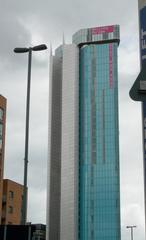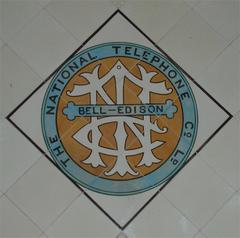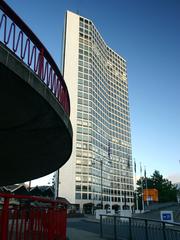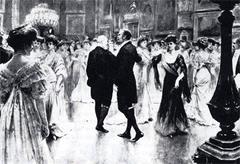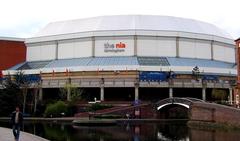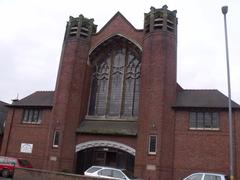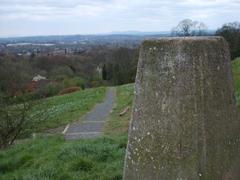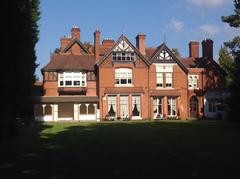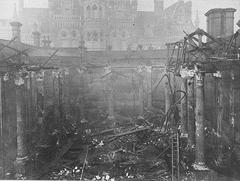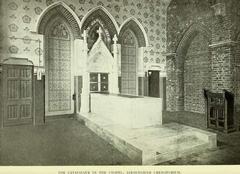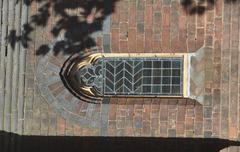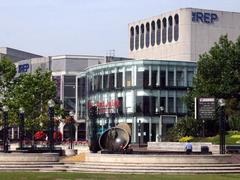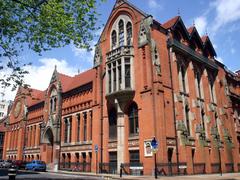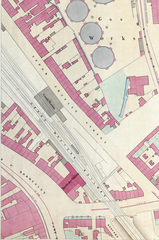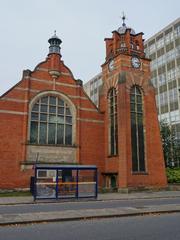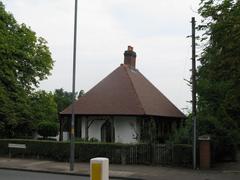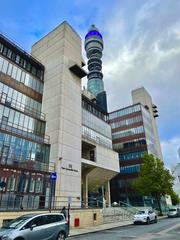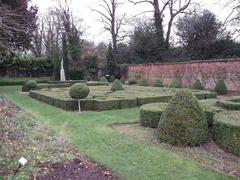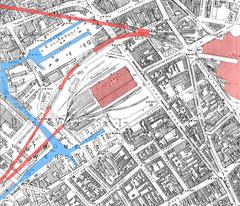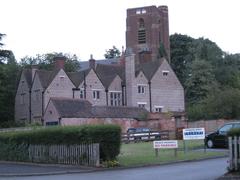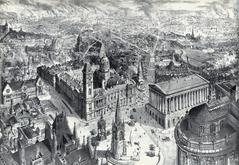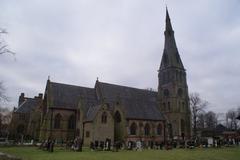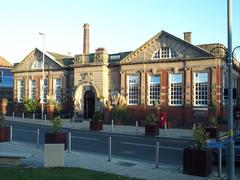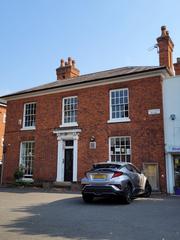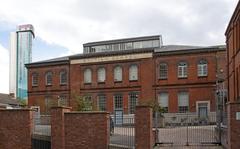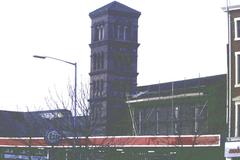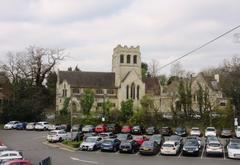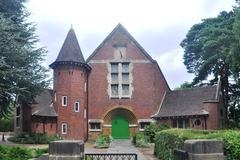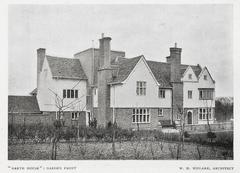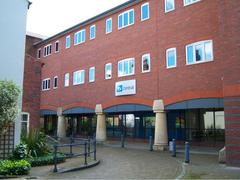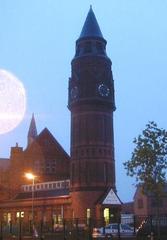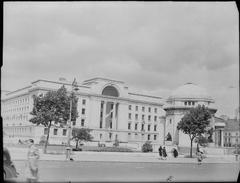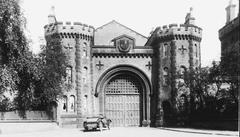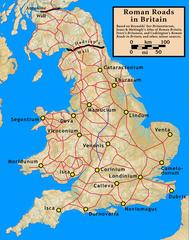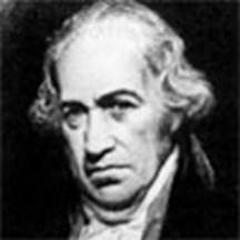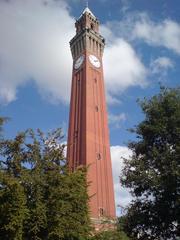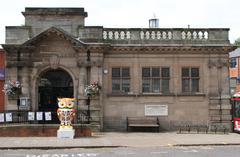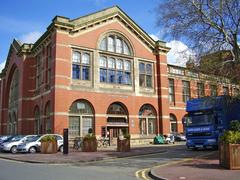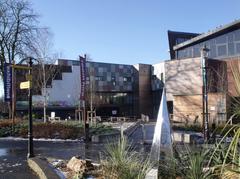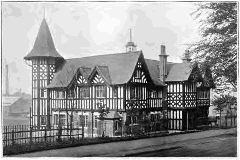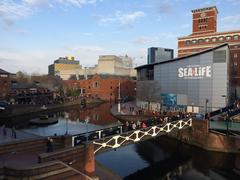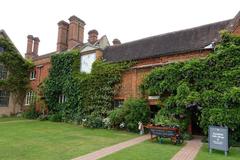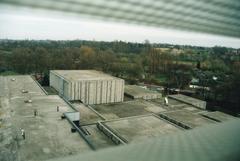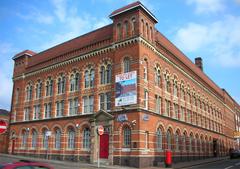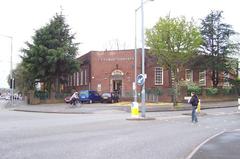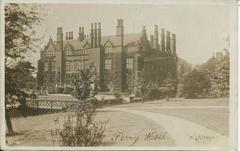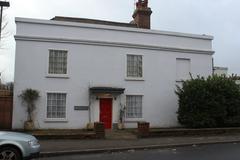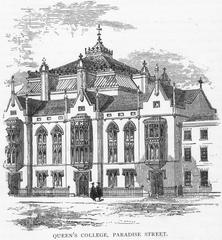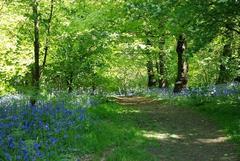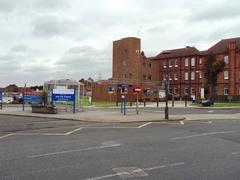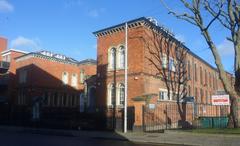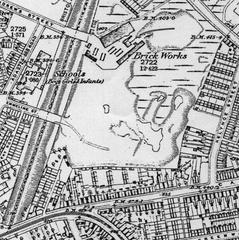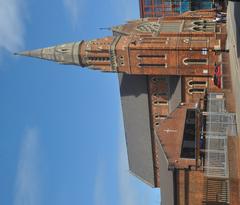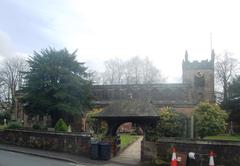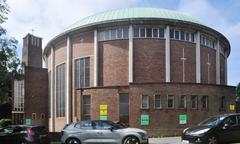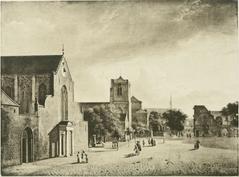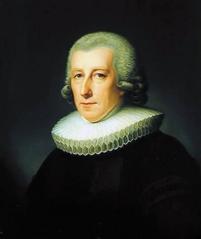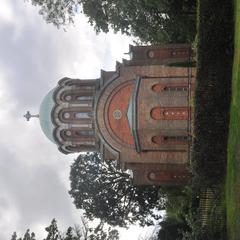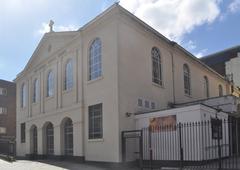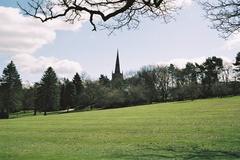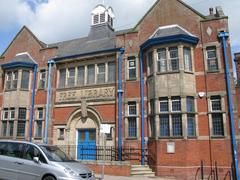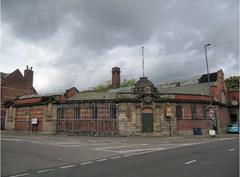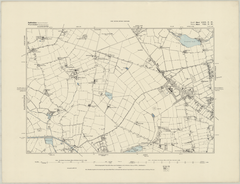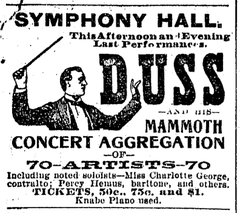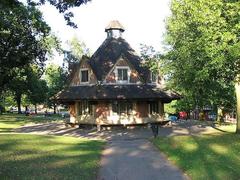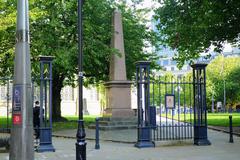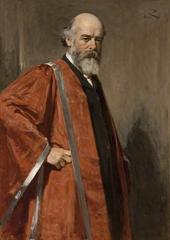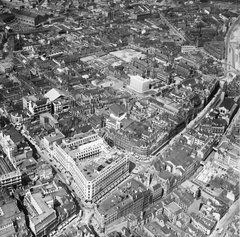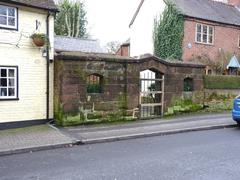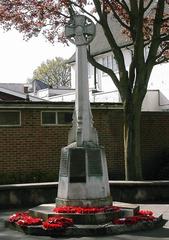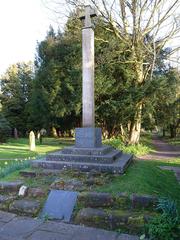Visiting Guide to Cathedral Church of Saint Philip in Birmingham, UK
Publication Date: 19/07/2024
Introduction
Discover the rich history and stunning architecture of the Cathedral Church of Saint Philip in Birmingham, United Kingdom. This comprehensive guide provides essential information, from historical insights and architectural marvels to practical visiting tips and nearby attractions. Originally constructed between 1709 and 1715 by renowned Baroque architect Thomas Archer, this cathedral stands as a testament to Birmingham’s ecclesiastical and cultural heritage. Elevated to cathedral status in 1905, it has since played a pivotal role in the city’s spiritual and social life. Whether you’re a history enthusiast, architecture lover, or simply looking for a serene place to visit, the Cathedral Church of Saint Philip offers something for everyone. Learn about its fascinating past, admire the stunning stained glass windows by Edward Burne-Jones, and find out all you need to know for a visit that promises to be both enriching and memorable.
Contents Overview
- Introduction
- History of the Cathedral Church of Saint Philip, Birmingham
- Foundation and Early Years
- Architectural Significance
- Transition to Cathedral Status
- World War II and Restoration
- Modern Developments
- Cultural and Artistic Contributions
- Visitor Information
- Opening Hours and Admission
- Guided Tours
- Accessibility
- Photography
- Dress Code
- Nearby Attractions
- Events and Services
- Souvenirs and Gifts
- Refreshments
- Transportation and Parking
- Frequently Asked Questions (FAQ)
- Conclusion
History of the Cathedral Church of Saint Philip, Birmingham
Foundation and Early Years
The Cathedral Church of Saint Philip in Birmingham, United Kingdom, stands as a testament to the city’s rich ecclesiastical history. The foundation stone of the church was laid on September 25, 1709, by William Hutton, a prominent historian and the first person to write a history of Birmingham. The church was designed by the renowned Baroque architect Thomas Archer, who was influenced by the works of Sir Christopher Wren. Archer’s design was distinctive for its time, featuring a rectangular plan with a prominent tower and dome, which was a departure from the traditional Gothic style prevalent in England.
The construction of the church was completed in 1715, and it was consecrated on October 4 of the same year. Initially, it served as a parish church for the rapidly growing town of Birmingham, which was experiencing significant industrial and commercial expansion. The church’s location in the Colmore Row area, which was then a fashionable residential district, underscored its importance to the local community.
Architectural Significance
The Cathedral Church of Saint Philip is an exemplary piece of Baroque architecture, characterized by its elegant proportions and intricate detailing. Thomas Archer’s design incorporated several innovative features, including a large, open nave that allowed for an unobstructed view of the altar. The church’s exterior is adorned with classical elements such as pilasters, cornices, and a balustraded parapet, which contribute to its stately appearance.
One of the most striking features of the cathedral is its tower, which rises to a height of 150 feet. The tower is topped with a dome and lantern, inspired by the churches of Rome. The dome is supported by a series of Corinthian columns, adding to the overall grandeur of the structure. The interior of the cathedral is equally impressive, with a richly decorated chancel and a series of stained glass windows designed by the renowned artist Edward Burne-Jones in the late 19th century.
Transition to Cathedral Status
In 1905, the Church of Saint Philip was elevated to the status of a cathedral, becoming the seat of the Bishop of Birmingham. This transition marked a significant milestone in the church’s history, reflecting Birmingham’s growing importance as a major urban center. The elevation to cathedral status also necessitated several modifications to the building, including the addition of a new chancel and the installation of a bishop’s throne.
The early 20th century was a period of significant change for the cathedral, as it adapted to its new role as the spiritual heart of the Diocese of Birmingham. The cathedral’s clergy and congregation played an active role in addressing the social and economic challenges facing the city, including poverty, unemployment, and housing shortages. The cathedral also became a center for cultural and educational activities, hosting lectures, concerts, and exhibitions.
World War II and Restoration
The Cathedral Church of Saint Philip, like many buildings in Birmingham, suffered damage during World War II. On November 19, 1940, the cathedral was hit by a bomb during the Birmingham Blitz, causing extensive damage to the roof and interior. Despite the destruction, the cathedral’s iconic tower and dome remained intact, serving as a symbol of resilience and hope for the people of Birmingham.
In the post-war years, a major restoration project was undertaken to repair and restore the cathedral to its former glory. The restoration work, which was completed in 1948, included the reconstruction of the roof, the repair of the stained glass windows, and the restoration of the interior decoration. The project was overseen by the architect Stephen Dykes Bower, who was known for his expertise in ecclesiastical architecture.
Modern Developments
In recent decades, the Cathedral Church of Saint Philip has continued to evolve, reflecting the changing needs and aspirations of its congregation and the wider community. In 2000, a major refurbishment project was undertaken to modernize the cathedral’s facilities and improve accessibility. The project included the installation of new lighting and sound systems, the refurbishment of the crypt, and the creation of new spaces for community activities and events.
The cathedral has also embraced its role as a center for social justice and community engagement. It hosts a range of programs and initiatives aimed at addressing issues such as homelessness, mental health, and social exclusion. The cathedral’s clergy and staff work closely with local charities and organizations to provide support and advocacy for vulnerable individuals and families.
Cultural and Artistic Contributions
The Cathedral Church of Saint Philip is not only a place of worship but also a significant cultural and artistic landmark. The cathedral’s collection of stained glass windows, designed by Edward Burne-Jones, is considered one of the finest examples of Victorian stained glass in the country. Burne-Jones, who was born in Birmingham, created a series of windows depicting scenes from the life of Christ, which are renowned for their intricate detail and vibrant colors.
The cathedral also houses a number of important artworks and memorials, including a bronze statue of Bishop Charles Gore, the first Bishop of Birmingham, and a memorial to the victims of the Birmingham Blitz. The cathedral’s music program is another highlight, with a renowned choir and regular organ recitals that attract visitors from across the region.
Visitor Information
Opening Hours and Admission
The Cathedral Church of Saint Philip is open to visitors throughout the week. The typical opening hours are from 7:30 AM to 6:30 PM from Monday to Saturday, and from 8:00 AM to 5:00 PM on Sundays. However, these hours can vary, especially during special events or services. It is advisable to check the official website for the most current information before planning your visit.
Admission to the cathedral is free, but donations are encouraged to help with the upkeep of this historic building. Special tours or events may have a fee, so it’s best to inquire ahead of time.
Guided Tours
Guided tours are available and highly recommended for those who wish to delve deeper into the history and architecture of the cathedral. These tours are usually conducted by knowledgeable volunteers who can provide fascinating insights into the building’s past and its significance. Tours typically last about an hour and can be booked in advance through the cathedral’s website.
Accessibility
The Cathedral Church of Saint Philip is committed to being accessible to all visitors. The main entrance is wheelchair accessible, and there are ramps and lifts available within the building. Accessible restrooms are also provided. For visitors with hearing impairments, induction loops are available during services and events. It is advisable to contact the cathedral staff in advance if you have specific accessibility needs (contact page).
Photography
Photography is allowed inside the cathedral, but visitors are asked to be respectful and discreet, especially during services. Flash photography and tripods are generally not permitted to avoid disturbing other visitors and to protect the delicate interiors. For professional photography or filming, prior permission is required, and it may be subject to a fee. More details can be found on the cathedral’s photography policy page.
Dress Code
While there is no strict dress code for visiting the Cathedral Church of Saint Philip, visitors are encouraged to dress modestly out of respect for the sacred space. Comfortable footwear is recommended as you may spend a considerable amount of time walking and standing during your visit.
Nearby Attractions
The cathedral is centrally located in Birmingham, making it an excellent starting point for exploring other nearby attractions. Some notable places within walking distance include:
- Birmingham Museum and Art Gallery: Home to an extensive collection of art, including the famous Pre-Raphaelite paintings. More information can be found on their website.
- Victoria Square: A bustling public square featuring impressive statues and the iconic Town Hall.
- Bullring & Grand Central: One of the largest shopping centers in the UK, perfect for a shopping spree or a meal at one of its many restaurants. Visit their website for more details.
Events and Services
The Cathedral Church of Saint Philip hosts a variety of events and services throughout the year. Regular services include daily prayers, Eucharist, and Sunday worship. Special events such as concerts, lectures, and community gatherings are also held frequently. The cathedral’s events calendar provides up-to-date information on upcoming activities.
Souvenirs and Gifts
The cathedral has a small gift shop where visitors can purchase souvenirs, books, and other items related to the cathedral’s history and religious significance. The shop is located near the entrance and is open during regular visiting hours. Proceeds from sales support the maintenance and preservation of the cathedral.
Refreshments
While there are no dining facilities within the cathedral itself, there are numerous cafes and restaurants in the surrounding area. Colmore Row, where the cathedral is situated, offers a variety of dining options ranging from casual cafes to fine dining establishments. For a quick bite, you can visit one of the nearby coffee shops or bakeries.
Transportation and Parking
The Cathedral Church of Saint Philip is easily accessible by public transportation. The nearest train station is Birmingham Snow Hill, just a short walk away. Birmingham New Street Station, the city’s main railway hub, is also within walking distance. Several bus routes serve the area, and there are taxi ranks nearby.
For those driving, there are several public parking facilities in the vicinity, including the Snow Hill Car Park and the Livery Street Car Park. It is advisable to check parking rates and availability in advance, especially during peak times.
Frequently Asked Questions (FAQ)
What are the visiting hours for the Cathedral Church of Saint Philip?
The cathedral is open daily from 7:30 AM to 6:30 PM from Monday to Saturday, and from 8:00 AM to 5:00 PM on Sundays. Check the official website for any changes in visiting hours or special events.
Do I need a ticket to visit the Cathedral Church of Saint Philip?
No, admission is free, but donations are encouraged to support the cathedral’s maintenance and preservation.
Are guided tours available?
Yes, guided tours are available and can be booked in advance. They offer in-depth insights into the cathedral’s history, architecture, and art.
Is the Cathedral Church of Saint Philip accessible for visitors with disabilities?
Yes, the cathedral is wheelchair accessible, and facilities are available for visitors with disabilities.
What nearby attractions can I visit after touring the cathedral?
Other nearby attractions include the Birmingham Museum and Art Gallery, the Library of Birmingham, and the Bullring Shopping Centre.
Conclusion
Visiting the Cathedral Church of Saint Philip in Birmingham offers a unique opportunity to explore a site of immense historical, architectural, and cultural significance. From its Baroque design by Thomas Archer to the stunning stained glass windows by Edward Burne-Jones, the cathedral is a treasure trove of artistic and historical wonders. It has weathered significant events like World War II and has continuously evolved to meet the needs of its congregation and the wider community. With its central location, free admission, and a range of visitor amenities, the cathedral serves as a must-visit destination for anyone interested in Birmingham’s rich heritage. Whether you’re attending a service, enjoying a guided tour, or simply soaking in the serene atmosphere, the Cathedral Church of Saint Philip promises an enriching experience. For the latest updates and more information, be sure to visit the official website and follow the cathedral on social media.
Source List
- Historic England. (n.d.). Cathedral Church of St Philip, Birmingham https://historicengland.org.uk/listing/the-list/list-entry/1075857
- British Listed Buildings. (n.d.). Cathedral Church of St Philip, Birmingham https://britishlistedbuildings.co.uk/101075857-cathedral-church-of-st-philip-birmingham
- Birmingham Cathedral. (n.d.). Official Website https://www.birminghamcathedral.com/
